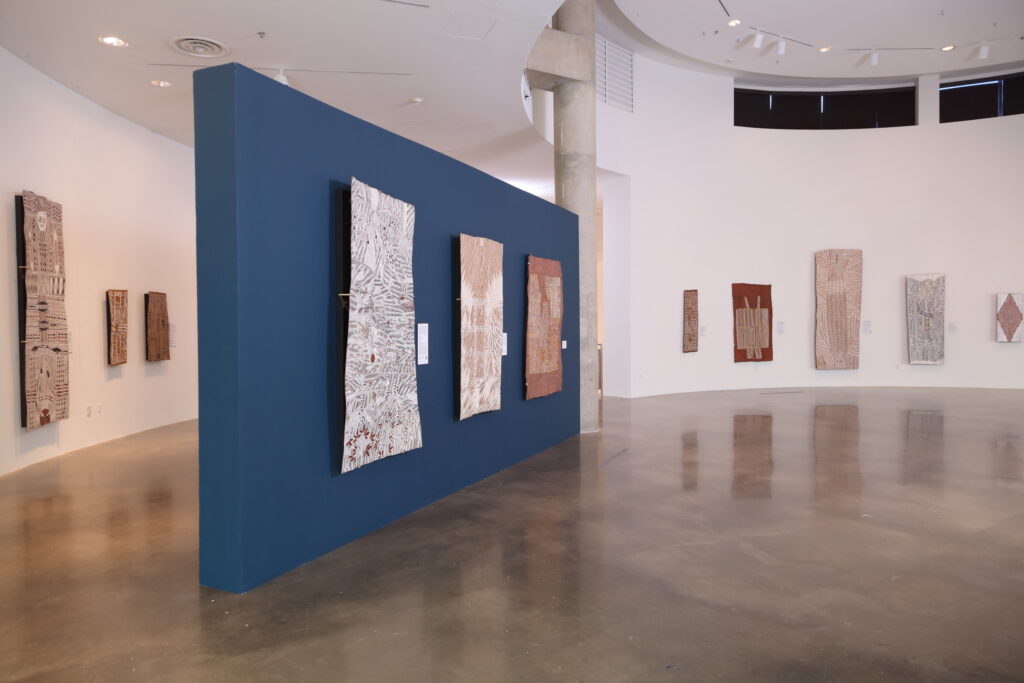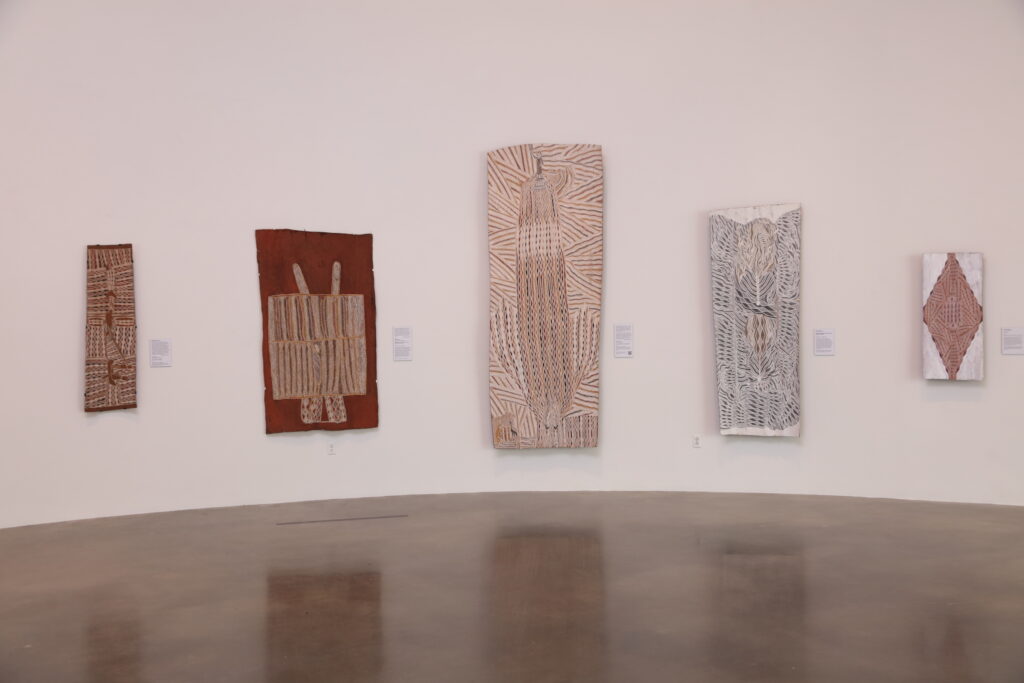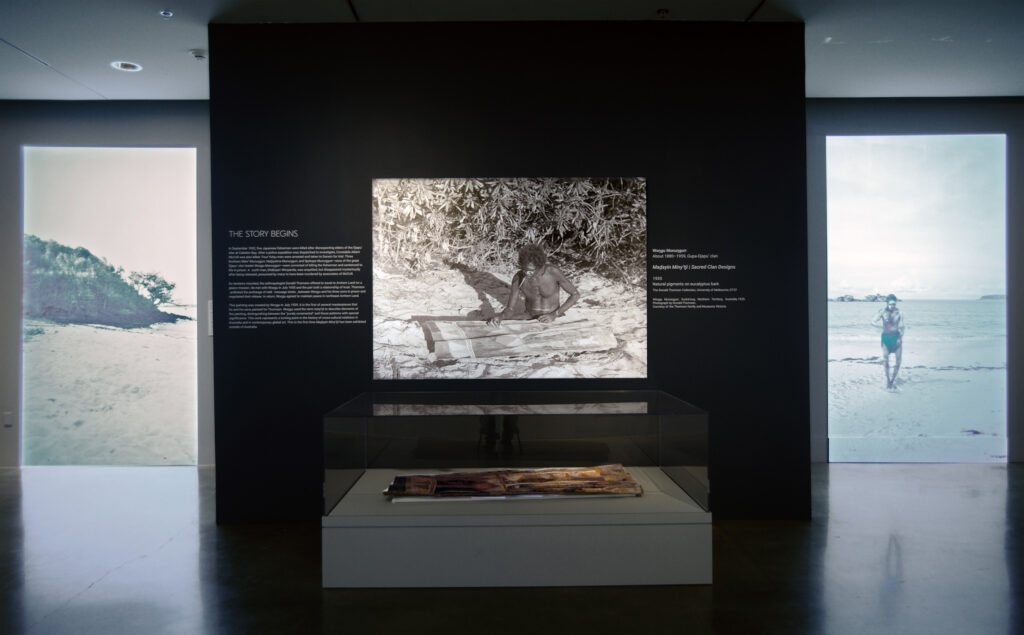
Populated by sharks, snakes and kangaroos, but mostly by densely arrayed lines and shapes, the pictures in Madayin: Eight Decades of Aboriginal Australian Bark Painting From Yirrkala represent the universe. The enigmatic designs in the American University Museum show conjure a vastness that contrasts with the smallness of the area in which the artworks were made: the eastern side of Arnhem Land, a craggy peninsula that juts from Australia’s northern coast.
Indigenous Australian art, in the form of carved or painted rock, is known to be at least 40,000 years old. But Yirrkala’s madayin miny’tji – designs deemed both beautiful and holy – were revealed to the wider world less than a century ago. After several 1930s incidents in which outsiders were killed, Australian anthropologist Donald Thomson traveled to the area to seek reconciliation. He earned the trust of an elder of the Yolngu clans, Wonggu Mununggurr, who made a painting of sacred designs and gave it to Thomson.
That 1935 picture is included in this traveling show, which was organized by the Kluge-Ruhe Aboriginal Art Collection of the University of Virginia and the Indigenous-owned Buku-Larrnggay Mulka Center in Australia. The painting is characteristic of the Yolngu style. Their pictures are densely patterned with natural pigments in black, white, and shades of tan and brown, and rendered with a human-hair brush on the inside of a sheet of eucalyptus bark.

Most of the nearly 90 pictures are recent, and a few demonstrate the influence of modern technology or global travel. Dhambit Mununggurr’s Ocean employs synthetic blue paint to depict the sea and its creatures, notably octopuses. The Statue of Liberty appears at the top of Journey to America by Djambawa Marawili, one of the show’s curators.
More typical, though, are pictures that simultaneously depict and embody the north Australian landscape. Since their canvases are stripped from tree trunks, the formats are always vertical and sometimes towering. Imperfections in the bark are preserved and incorporated into the compositions. The pigment colors are both symbolically and literally earthy.
Less traditional but no less engrossing are two near-monochromatic paintings, both titled The Milky Way, by Naminapu Maymuru-White. They depict stars as well as a particular river in Arnhem Land, or perhaps stars reflected in that river. The diamond-shaped celestial lights twinkling within gray ribbons also exemplify life and death, since Yolngu lore says that terrestrial creatures are transformed into ethereal entities.

The exhibition includes several videos that document ceremonial dances and song cycles, and illustrate the significance of the sea to the Yolngu, which is one aspect of the people that distinguishes them from other Australian Indigenous groups.
The anthropological aspects of Maḏayin are interesting and useful, if perhaps not essential. Yolngu cosmology is a lot harder to grasp than the visual power of the clans’ art. To ponder these intricate paintings is to be transported to another land, even if it’s one that can’t fully be understood.